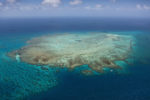Marine heatwaves are getting hotter, lasting longer and doing more damage.
On land, heatwaves can be deadly for humans and wildlife and can devastate crops and forests. Unusually warm periods can also occur in the ocean. These can last for weeks or months, killing off kelp forests and corals, and producing other significant impacts on marine ecosystems, fishing and aquaculture industries. Yet until recently, the formation, distribution and frequency of marine heatwaves had received little research attention. Long-term change Climate change is warming ocean waters and causing shifts in the distribution and abundance of seaweeds, corals, fish and other marine species. For example, tropical fish species are now commonly found in Sydney Harbour. But these changes in ocean …







